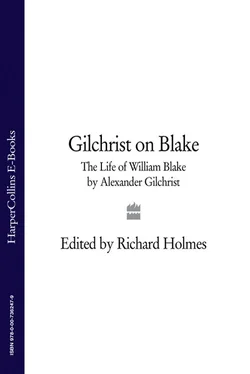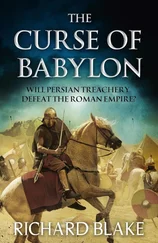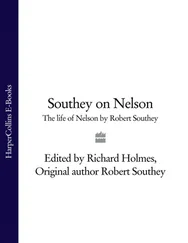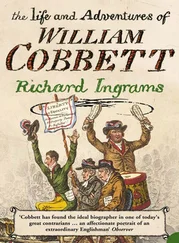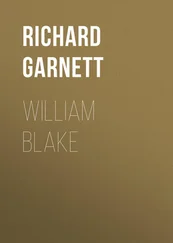At the same time Palmer hinted at a prophet from the Old Testament, rather than the New: a formidable Blake who could be highly ‘expressive’ and emotional, ‘quivering with feeling’, capable of deep anger, and with a flashing glance that could be ‘terrible’ towards his enemies. ‘Cunning and falsehood quailed under it.’ He summed up these contradictions with a painterly example from the Italian Renaissance. ‘His ideal home was with Fra Angelico: a little later he might have been a reformer, but after the fashion of Savonarola.’ Gilchrist was captivated, and he and Palmer became fast friends.
A year later in 1856, the Gilchrist family moved in next to the Carlyles at No. 6 Cheyne Row. The pursuit of Blake’s trail through London galleries, local museums, antique bookshops, and private collections now began in earnest. Gilchrist purchased Blake prints, and borrowed what he could not buy. Anne started her own collection of Blake’s watercolours. Together they tracked down Blake’s various lodgings and workshops north and south of the river, in Soho and Lambeth, and meticulously researched his three year sojourn at Felpham, by the sea in Sussex.
Having established friendly contact with the affable Samuel Palmer, Gilchrist moved on to the other surviving Ancients. They were not all so easy to deal with. The painter John Linnell, was helpful but bossy, suggesting the possibilities of a collaboration. He had eleven precious letters from Blake, written at the very end of his life. The sculptor Frederick Tatham, having written his own private Memoir, and taken to religion, was strange and touchy. The artist George Richmond (only fifteen when he met Blake) was now a well-meaning but gushing middle-aged raconteur.
Gilchrist engaged them in correspondence and interviewed them where he could, minutely compiling anecdotes and stories, trying to sift the true from the apocryphal. He talked to Francis Oliver Finch and Flaxman’s younger sister Maria Denman. He was particularly interested in the relations between Blake and his wife Catherine. Original letters from Blake were the one thing Gilchrist found it almost impossible to discover, apart from Linnell’s.
Gilchrist’s greatest diplomatic triumph was to pierce the peppery reserve of the retired journalist, Henry Crabb Robinson, then in his eighties. Robinson – once the intimate friend of Wordsworth, Coleridge and Lamb – had kept extensive diary accounts of the whole Romantic circle during his time. They were admiring, but sceptical and extremely shrewd. In 1811 he had published a rare appreciation of Blake’s work in a German magazine published in Hamburg: ‘William Blake: Artist, Poet, and Religious Dreamer’. Moreover, his unpublished Journals for 1825-7 contained a unique series of interviews with the older Blake. Robinson paid particular attention to the question of Blake’s visions, the logic (or otherwise) of his explanations, and the significance of his eccentricities. Gilchrist managed to obtain all this material, and use it with brilliant effect in Chapter 36.
In the winter of 1859, Gilchrist submitted an outline draft of his Life of Blake to the publisher Macmillan. He was offered an £150 contract, and an advance on research expenses of £20. Compared with the Etty commission, these terms marked a small but not very generous increase. After all, this was a time when popular biographies by Mrs Gaskell and John Forster were being commissioned for well over £1,000. But of course Blake’s name was still worth nothing. Undeterred, Gilchrist worked on through 1860, continuing to support his family with freelance journalism. But it must have seemed an increasingly quixotic venture.
In March 1861, he finally met Dante Gabriel Rossetti, and the pace of research increased still further. The Blake manuscript notebook, purchased over fourteen years before, was at last revealed. Over several later meetings at the Cheshire Cheese tavern, in Fleet Street, the new poems and drawings were discussed. Gilchrist quickly passed muster with the pre-Raphaelite brotherhood, all of whom were suddenly excited by the prospect of the forthcoming book Rossetti’s friendship also brought him into contact with Swinburne, who now discovered a passion for Blake.
Most enthusiastic of all was Dante Gabriel’s brother, the art critic William Michael Rossetti, who encouraged Gilchrist to think in terms of an even more ambitious project. After the biography perhaps he could edit a companion volume of Blake’s poems and a catalogue of his art work? Spurred on by these late supporters, Gilchrist promised Macmillan to deliver the completed biography by spring 1862.
But after six years, the work was now close to exhausting him. Money was short, and by now the Gilchrists had four children. Gilchrist’s constitution, never strong, began to fail. He was frequently ill and depressed, harassed by his weekly art reviews. Sometimes he collapsed, unable to work on Blake for days on end. It was in this growing professional crisis that Anne Gilchrist began quietly to assert herself.
Anne had probably been working as Alexander’s part-time research assistant ever since the Etty days. But now she became his full-time amanuensis. She took dictation, copied Blake’s manuscripts, checked facts and dates at the British Museum, and prepared an index. She admired Gilchrist’s perfectionism, always pursuing one more source or reference. But sometimes she felt he would never complete the book at all.
Nonetheless, by late summer 1861, Gilchrist told Macmillan that he had a draft of the whole biography. Although he was continually slipping in extra materials and anecdotes, the basic structure of the book was secure. It was lucidly organized in thirty-eight short chapters, and he was ready to start sending it in batches to the printer, for setting up in proof. This was the usual procedure for a large book.
Macmillan was delighted and urged him to begin. Accordingly, Gilchrist sent the first eight chapters to the printers in September 1861, taking Blake’s Life up to the Poetic Sketches and the ‘Notes on Lavater’ made when Blake had just turned thirty. He promised to send in the next batch by November, with the aim of having the complete work in proof by the following spring. He was under great pressure, but believed that with Anne’s help he could just about fulfil his deadlines.
On 20 November 1861, Gilchrist wrote to his publisher that he had been unable to send the next ‘big mass of copy, consisting of the next dozen or so chapters (taking Blake up to forty and his most productive years). He explained that ‘domestic troubles have during the last month stood in the way’. For six weeks his eldest daughter, seven year old Beatrice, had been lying dangerously ill at Cheyne Row with scarlet fever. His wife Anne had insisted on a ‘rigid quarantine’, remaining alone in the child’s sickroom to carry out all the nursing herself. There was great fear of infection. Gilchrist was only allowed in once an evening, to make up the fire, while Anne stood back by the window. Meanwhile, he tried to look after the other three young children with the help of one (frequently drunk) domestic.
At the end of his letter, Gilchrist unburdened himself to his publisher.
We have been in great misery at times, aggravated by our having a doctor in whom we had not implicit confidence…My wife has during all this time been confined to the sickroom, without help!…Of hired nurses we have a horror, our friends have mostly children and others regard for whom makes them dread crossing the threshold of a scarlatina infected house. Forgive this closing matter.
Yours faithfully,
Alexander Gilchrist.
A week later, just as his little daughter Beatrice began to pull through, Gilchrist was himself struck down. Jane Carlyle sent notes offering help to Anne, and Thomas Carlyle brought a fashionable physician, who looked at Gilchrist from the distance of the sickroom door and hastily departed. After that, events unfolded quickly. Ten days after he had sent his desperate, apologetic letter to his publisher Macmillan, Alexander Gilchrist slipped into a coma.
Читать дальше
